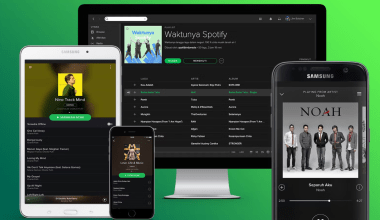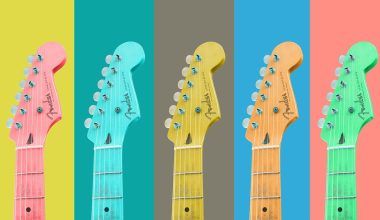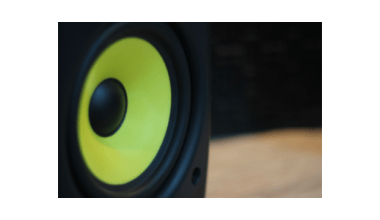Electronic music has transformed the way we experience sound. From underground rave scenes to mainstream festivals, its influence is undeniable. But where do fans and artists connect over this ever-evolving genre? That’s where the electronic music press steps in. In this blog, we’ll dive deep into the vibrant world of electronic music press—exploring its history, role, and how it’s shaping the industry today.
What is Electronic Music Press?
The electronic music press refers to media platforms—both print and digital—dedicated to covering electronic music. These platforms offer everything from news and interviews to reviews and opinion pieces. They act as a bridge between artists and their fans, shedding light on the stories behind the beats.
Over time, the electronic music press has evolved from niche magazines to globally influential websites. Think about names like Mixmag, Resident Advisor, and DJ Mag. These outlets don’t just report; they shape trends, highlight emerging talent, and document the cultural shifts in electronic music.
Why Does Electronic Music Press Matter?
The importance of the electronic music press goes beyond simple reporting. Here’s why it’s crucial:
- Spotlighting Talent: The press is often the first to feature rising artists, giving them exposure and credibility.
- Shaping Trends: Through reviews and editorials, these platforms influence which sounds and subgenres gain traction.
- Connecting Fans: By covering events, albums, and stories, the press creates a shared experience for music enthusiasts worldwide.
Without the electronic music press, many artists might struggle to find their audience, and fans could miss out on discovering incredible music.
A Brief History of Electronic Music Journalism
To truly appreciate the role of the electronic music press, let’s take a quick trip down memory lane.
The Early Days
Back in the 1980s and 90s, electronic music was largely an underground movement. Magazines like The Face and ID began covering this burgeoning scene, introducing readers to house and techno’s pulsating rhythms.
These early publications were lifelines for fans, offering a glimpse into a world that wasn’t yet mainstream. Physical copies of magazines were coveted treasures, shared among friends and cherished for their deep insights into the genre.
The Digital Revolution
Fast forward to the 2000s, and the rise of the internet changed everything. Online platforms like Resident Advisor and Beatport News emerged, offering real-time updates on events, releases, and industry news.
Suddenly, fans didn’t have to wait for a monthly magazine to stay updated. The electronic music press became more accessible and inclusive, allowing voices from all over the globe to contribute.
The Present Landscape
Today, the electronic music press exists across multiple formats—websites, social media, podcasts, and even YouTube channels. Each platform offers unique ways to engage with the community, making electronic music journalism more dynamic than ever.
How to Engage with the Electronic Music Press
Whether you’re an artist, a fan, or someone curious about electronic music, engaging with the press can be incredibly rewarding. Here’s how:
For Fans
- Follow Reputable Platforms: Subscribe to newsletters and social media channels of trusted outlets like Mixmag or DJ Mag.
- Comment and Share: Engage with articles and videos. Your interaction helps sustain these platforms.
- Explore New Voices: Seek out independent blogs and YouTube channels for fresh perspectives.
For Artists
- Pitch Your Story: Reach out to journalists with a compelling pitch about your music or journey.
- Maintain Professionalism: Build relationships with editors and reporters through consistent and respectful communication.
- Leverage Features: Share any press coverage you receive with your audience to amplify its impact.
Challenges Facing the Electronic Music Press
Despite its vibrant presence, the electronic music press faces its share of challenges:
- Monetization: Many platforms rely on ads and sponsored content, which can sometimes compromise editorial integrity.
- Oversaturation: With so much content available, standing out becomes difficult for smaller outlets.
- Changing Consumption Habits: As audiences shift to video and social media, traditional long-form journalism struggles to retain readers.
The Future of Electronic Music Journalism
What’s next for the electronic music pres? Here are a few trends to watch:
- Interactive Content: Expect more VR experiences, live-streamed interviews, and interactive playlists.
- Focus on Diversity: Increasing representation of marginalized voices within the scene.
- Data-Driven Insights: Using analytics to predict trends and understand audience preferences.
How You Can Support the Electronic Music Press
The electronic music pres thrives on community support. Here’s what you can do:
- Subscribe: Paid subscriptions help sustain high-quality journalism.
- Donate: Many platforms accept donations to keep their operations running.
- Promote: Share content with your friends and encourage others to engage.
Conclusion
The electronic music pres is more than just a source of information—it’s a vital part of the electronic music ecosystem. From amplifying voices to documenting the culture, its role cannot be overstated. As fans and creators, we have the power to ensure it continues to thrive.
Let’s celebrate the platforms that bring us closer to the music we love. Whether you’re reading an in-depth interview on Resident Advisor or discovering new tracks through a blog, the electronic music pres is here to keep the beat alive.
For further reading, explore these related articles:
For additional resources on music marketing and distribution, visit DMT Records Private Limited.






